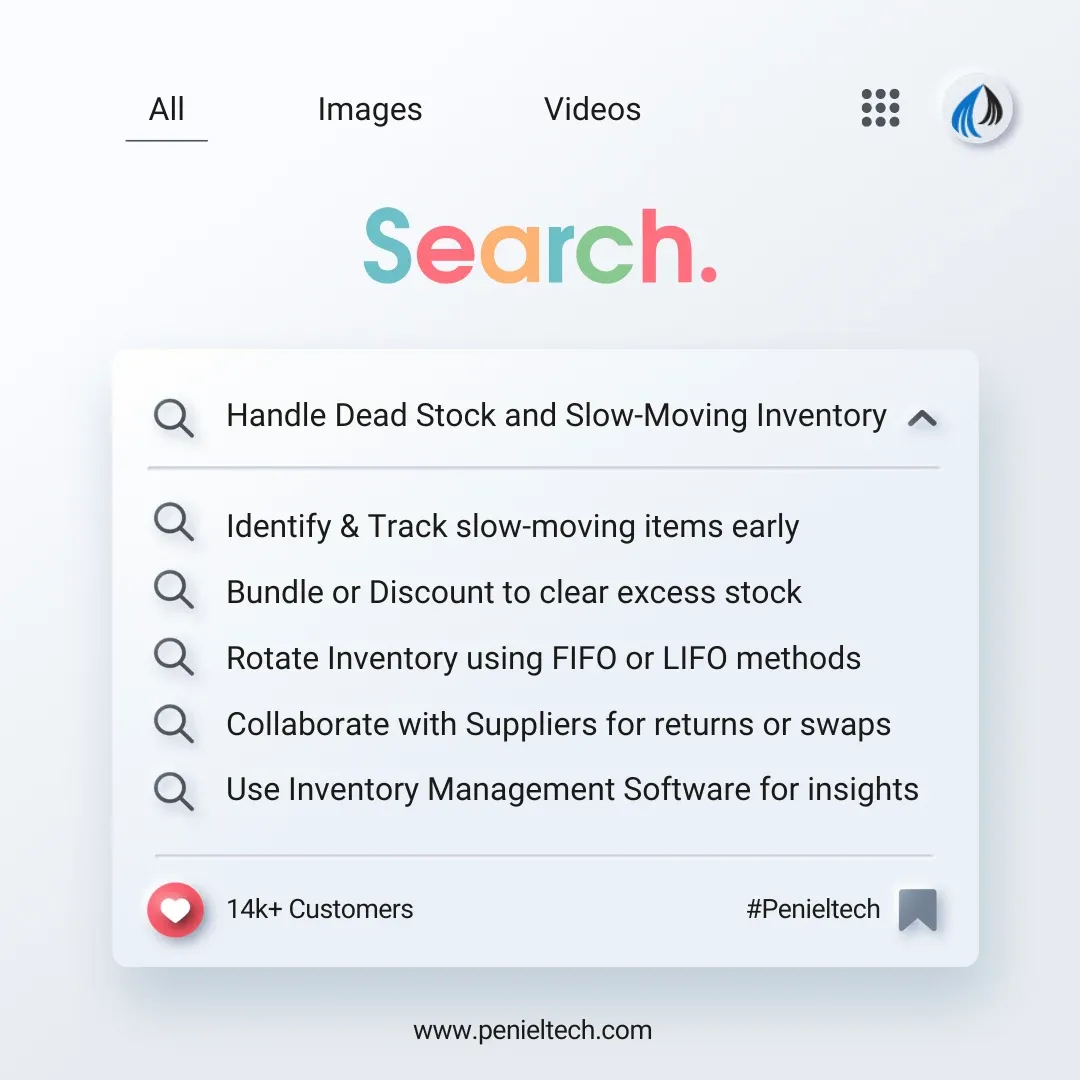How to Handle Dead Stock and Slow-Moving Inventory Effectively
Never heard about the terms Dead Stock and Slow-Moving Inventory? Well, it’s time to know, specifically, if your eyes are on the retail, e-commerce, and manufacturing businesses. It’s high time you knew about it and secured your future.

There’s always that one shelf in a warehouse where things barely move and the boxes are sealed tightly, untouched. That doesn’t mean anyone forgot about those stocks. The reason behind it is that those items just stopped being relevant, or people lost interest.
Every business with physical goods faces this at some point; stock starts to gather dust, takes up space, and quietly eats away at working capital.
Today, we are here to guide you with your inventory problems and help you learn about the best solution: Inventory management software UAE.
What is Dead Stock?
Dead stock is inventory that’s no longer sellable. It happens because of multiple reasons, like a drop in demand or the item becoming outdated. But whatever the matter is, the item is still there in storage for so long that selling it becomes either highly unlikely or impossible. Unfortunately, it’s not about just a few days. It won’t continue to generate revenue anymore, but it keeps occupying a valuable place in a warehouse until you throw it away.
What is Slow-Moving Inventory?
Now, slow-moving inventory is a bit different from dead stock. These are the items that still sell, just not often. It may take three months, six months, or more than that to move a box. It means these things are still in demand, but not consistent or fast. The thin line between slow-moving and dead stock isn’t always obvious at first, but time usually makes it clear.
Why Stock Becomes Slow or Dead
Several factors can turn a perfectly good inventory into shelf-sitters. It can be bad forecasting, a shift in market demand, or something else.
Here are a few things that often lead to stock becoming a burden:
- Ordering too much, too soon.
Streamline Operations
Automate tracking and reduce manual errors with smart inventory software.
- Changes in custom preferences.
- Change in trend or launch of a newer version.
- Poor visibility on what’s actually selling.
- Product quality or design issue.
- Canceled orders, poor packaging, and expiration date.
- Economic downturns can also be another reason.
One or two of these alone can’t break your inventory system. But over time, they’ll definitely add up. If one thing sits idle for too long, it stops being an asset; it turns into a cost.
In the Middle East, It Hits Harder
Warehousing in the UAE, and across the region, isn’t cheap. Owners here need to manage everything with a limited space, fast-paced logistics, and climate-controlled warehousing. This makes dead stock even more costly.
For example, take Dubai. Here, businesses work in an environment where trends shift quickly. In Dubai, one month’s hot seller could be next month’s leftovers.
As said earlier, climate also matters. Sometimes, certain products require controlled conditions, adding another layer of cost. So once the product stops being relevant, it’s difficult to move.
Warning Signs to Watch
Dead stock or slow-moving inventory never walks in and announces itself. It often sneaks in slowly.
Here are some signs to notice:
- Inventory hasn’t moved in for a long time.
- Stock doesn’t match seasonal demand anymore.
- There are Items that no one has reordered in a long while.
- Some repeated markdowns that still don’t convert to sales.
- Also, your staff have to move around old products just to reach the active stock.
Sometimes, you just need to take one glance at the warehouse to spot it, and trust me, that’s better. Because other times the problems show up only when reports don’t add up.
The Ripple Effect
The Impact on Operation Efficiency
Carrying dead or slow-moving inventory isn’t just a storage issue. The impact affects the entire flow of operations.
Boost Accuracy
Get real-time stock updates to prevent overstocking or shortages.
- Cash Flow Gets Stuck: Money spent on unsold items can’t be used anywhere else, like marketing, product development, or purchasing high-demand goods.

- Storage Gets Crowded: Warehouses aren’t for permanent residents. Every unit of dead stock takes up the space that could store something else with actual sales potential.
- Processes slow down: When you get a large dead stock, your staff waste time managing stocks that shouldn’t even be there. Overall, it slows down the entire work process.
- Reports Get Misleading: If you check on paper, it might look like stock levels are healthy. But in reality, only a small portion is active.
- Customer Experience Suffers: If your space and staff's attention are both focused on products that don’t sell, it may hamper your customer experience.
Initially, these issues aren’t always visible, but they build up quietly until the cost becomes too obvious to ignore.
The Role of Inventory Management Software UAE
Here comes the most awaited part. Handling this challenge doesn’t have to involve manual counting anymore. A modern Inventory Management Software can help you by offering instant insights to identify and resolve the issues.
- Stock Movement Tracking: With the best inventory software, you will have a record of every movement. So you can easily see what’s moving out and what’s not.
- Aging Reports: These reports show how long any item has been in storage; a clear way to spot slow moves.
- Low-Turnover Alerts: You can set alerts by using the best Inventory Management Software to know when specific SKUs haven’t sold.
- Batch and Expiry Tracking: This module is extremely useful for industries like food, pharma, or cosmetics, where timelines matter.
How Penieltech Helps
The truth is, dead stock and slow movers won’t be fixed magically. So, rather than waiting, only awareness can help.
Maximize Profitability
Analyze slow-moving items and optimize reorder points.
At Penieltech, we help businesses stay aware with the best inventory management software. We understand the region’s pace. We know that businesses move really fast here, and so should the systems behind them.
